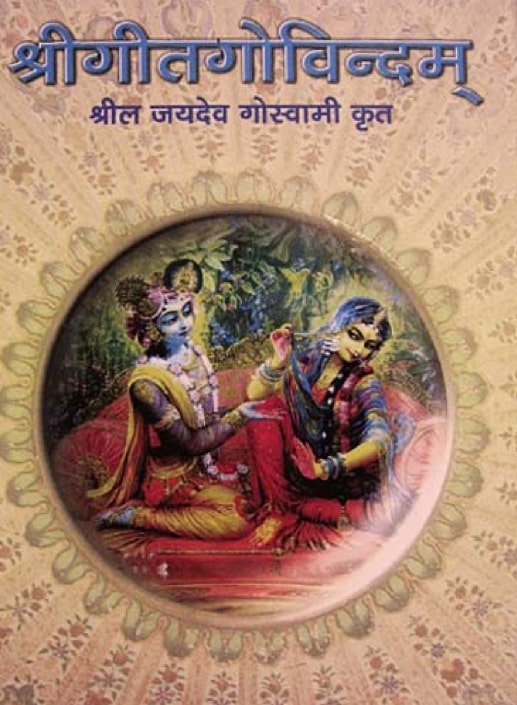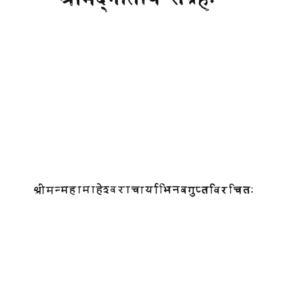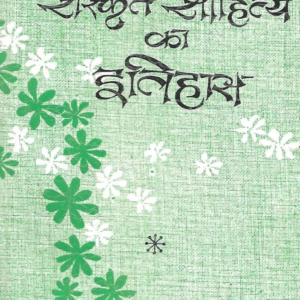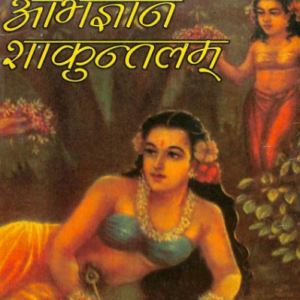Author: Jayadeva
About the author: Jayadeva ( born c. 1170 CE), also spelt Jaideva, was a Sanskrit poet during the 12th century. He is most known for his epic poem Gita Govinda, which concentrates on Krishna’s love with the gopi, Radha, in a rite of spring.
Gita Govindam : गीतगोविन्दम्
Gita Govindam
The Gita Govinda (Sanskrit: गीतगोविन्दम्) is a devotional poetry in Sanskrit. It is said to have been composed by the 12th-century Hindu poet Jayadeva. It describes the relationship between Krishna, Radha, and Gopis (female cow herders) in Vrindavan.
It is one of the most revered works in Indian literature and is celebrated for its lyrical beauty and profound devotional content. The text is a poetic expression of the love and divine relationship between Lord Krishna and Radha, making it a significant work in the Bhakti movement and Vaishnavism tradition.
Overview of Gita Govindam
- Authorship:
- The Gita Govindam was composed by Jayadeva, a renowned poet, and devotee of Krishna, who lived in the 12th century in the region that is present-day Odisha, India.
- Jayadeva’s compositions are noted for their deep emotional intensity and exquisite poetic form.
- Structure:
- The text is organized into twelve chapters, known as Sargas, each containing several songs or Prabandhas.
- Each Prabandha consists of verses and refrains, blending classical Sanskrit poetry with lyrical and musical elements.
- Content and Themes:
- Love and Devotion: The central theme of Gita Govindam is the love between Krishna and Radha, symbolizing the soul’s intense longing and devotion for the divine.
- Divine Play (Lila): The text portrays the various aspects of Krishna’s divine play (lila) with Radha and the gopis (cowherd maidens) of Vrindavan.
- Union and Separation: The narrative oscillates between the joy of union and the pain of separation, capturing the emotional spectrum of divine love.
- Spiritual Allegory: Beyond its surface narrative, the Gita Govindam is also seen as an allegory of the spiritual journey, with Radha representing the individual soul and Krishna symbolizing the Supreme God.
Key Sections and Themes
- Invocation:
- The text begins with a reverent invocation to the divine, seeking blessings for the successful completion of the poetic endeavour.
- Descriptive Imagery:
- Jayadeva’s verses are rich with vivid imagery and descriptions of nature, enhancing the emotive and aesthetic appeal of the narrative.
- Detailed portrayals of the pastoral beauty of Vrindavan and the physical and emotional states of the characters.
- Emotional Expressions:
- The poet captures a wide range of emotions, from the blissful joy of love to the anguish of longing and separation.
- Dialogues and monologues that reflect the internal states of Radha and Krishna, emphasizing their mutual devotion and desire.
- Musical and Rhythmic Quality:
- The Gita Govindam is designed to be sung and performed, with its rhythmic verses and refrains lending themselves to musical interpretation.
- Traditional classical Indian ragas and melodies are often employed to bring out the emotive depth of the text.
Cultural and Religious Significance
- Bhakti Movement:
- The Gita Govindam is a seminal text in the Bhakti movement, emphasizing personal devotion and the intimate relationship between the devotee and the divine.
- It has inspired countless devotees and saints, who have drawn upon its themes in their own spiritual practices and compositions.
- Vaishnavism Tradition:
- The text holds a special place in Vaishnavism, particularly among followers of Krishna.
- It is often recited, sung, and enacted in devotional gatherings, temple rituals, and festivals dedicated to Krishna.
- Cultural Impact:
- The Gita Govindam has influenced Indian art, music, dance, and literature, inspiring a rich tradition of classical and folk performances.
- It is a key component of classical Indian dance forms like Odissi, Bharatanatyam, and Kathak, where its verses are performed through expressive dance.
Philosophical and Spiritual Insights
- Divine Love:
- The Gita Govindam explores the concept of divine love (prema), portraying it as both a path to and a manifestation of spiritual realization.
- The love between Radha and Krishna symbolizes the soul’s ultimate union with the divine, transcending the physical and emotional planes.
- Rasa Theory:
- The text is a prime example of the Indian aesthetic theory of rasa, which emphasizes the emotional essence and flavor evoked by a work of art.
- Jayadeva masterfully employs the rasas, particularly Shringara (the erotic), to convey the depth of divine love and devotion.
The Gita Govindam stands as a timeless masterpiece of devotional literature, celebrated for its poetic brilliance, emotional depth, and spiritual significance. Jayadeva’s portrayal of the divine love between Krishna and Radha continues to inspire and elevate the hearts of devotees and connoisseurs of art and literature. Its enduring legacy in the realms of spirituality, culture, and aesthetics underscores its universal appeal and profound impact on the collective consciousness.
There are three major Hindi Translations of Gita Govindam:
- Gita Govindam – Translated by Kedar Nath Sharma
- Gita Govindam – Translated by Maharaj Deen Deekshit
- Gita Govindam – Translated by Bhaktivedanta Narayan Goswami
Gita Govindam | गीतगोविन्दम्
| लेखक : | Jayadeva | जयदेव |
|---|---|
| Book Language | संस्कृत , हिंदी | Sanskrit, Hindi |
| पुस्तक का साइज़ : |
|
| कुल पृष्ठ : |
|
| श्रेणी : | धार्मिक / Religious, साहित्य / Literature, हिंदू – Hinduism |
- Gita Govindam – Translated by Kedar Nath Sharma (33.22 MB)
2. Gita Govindam – Translated by Maharaj Deen Deekshit (139 MB)
Please note that due to the bulky size of the book, this may take longer than usual to download.
3. Gita Govindam – Translated by Bhaktivedanta Narayan Goswami (2.44 MB)






